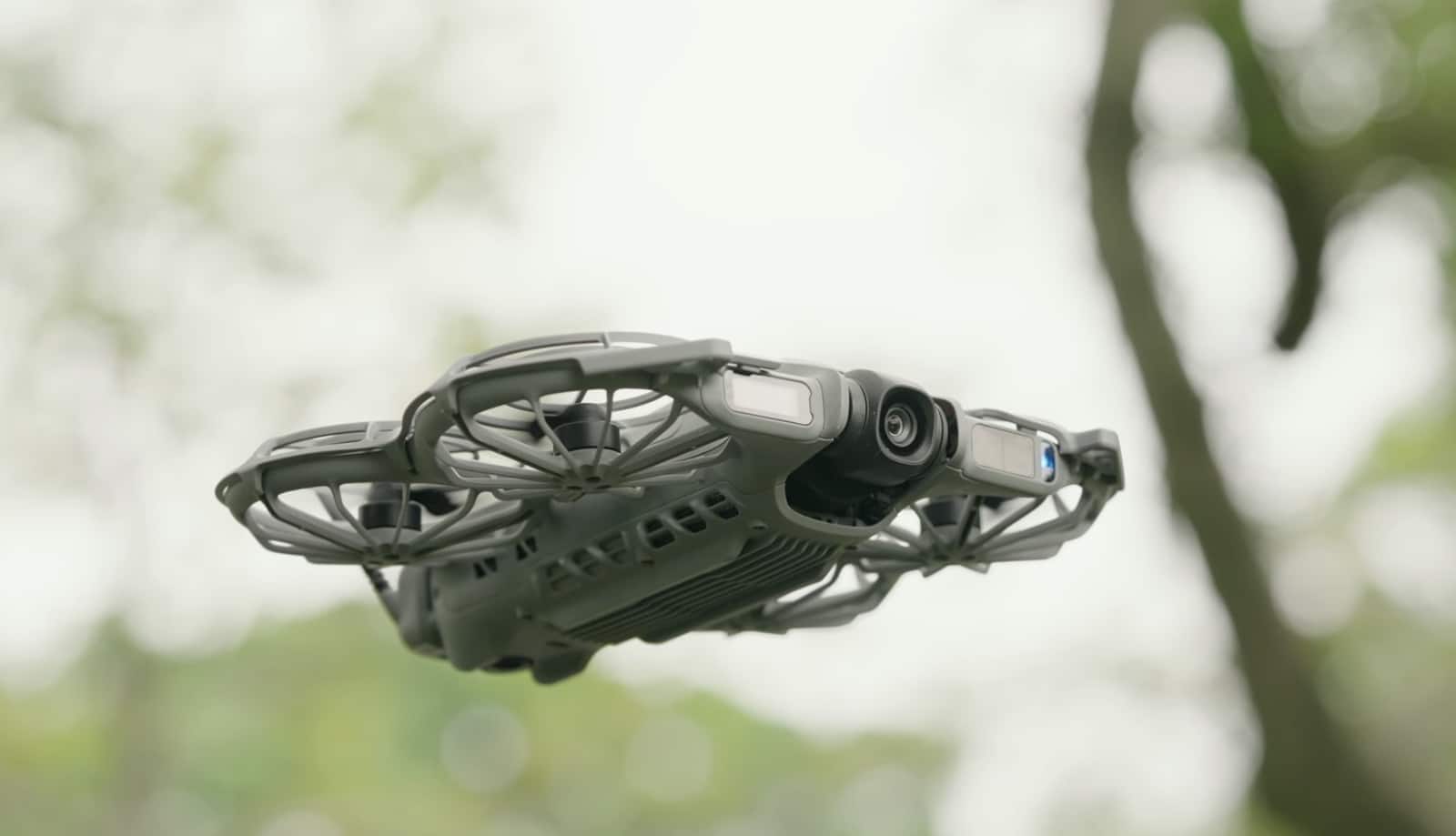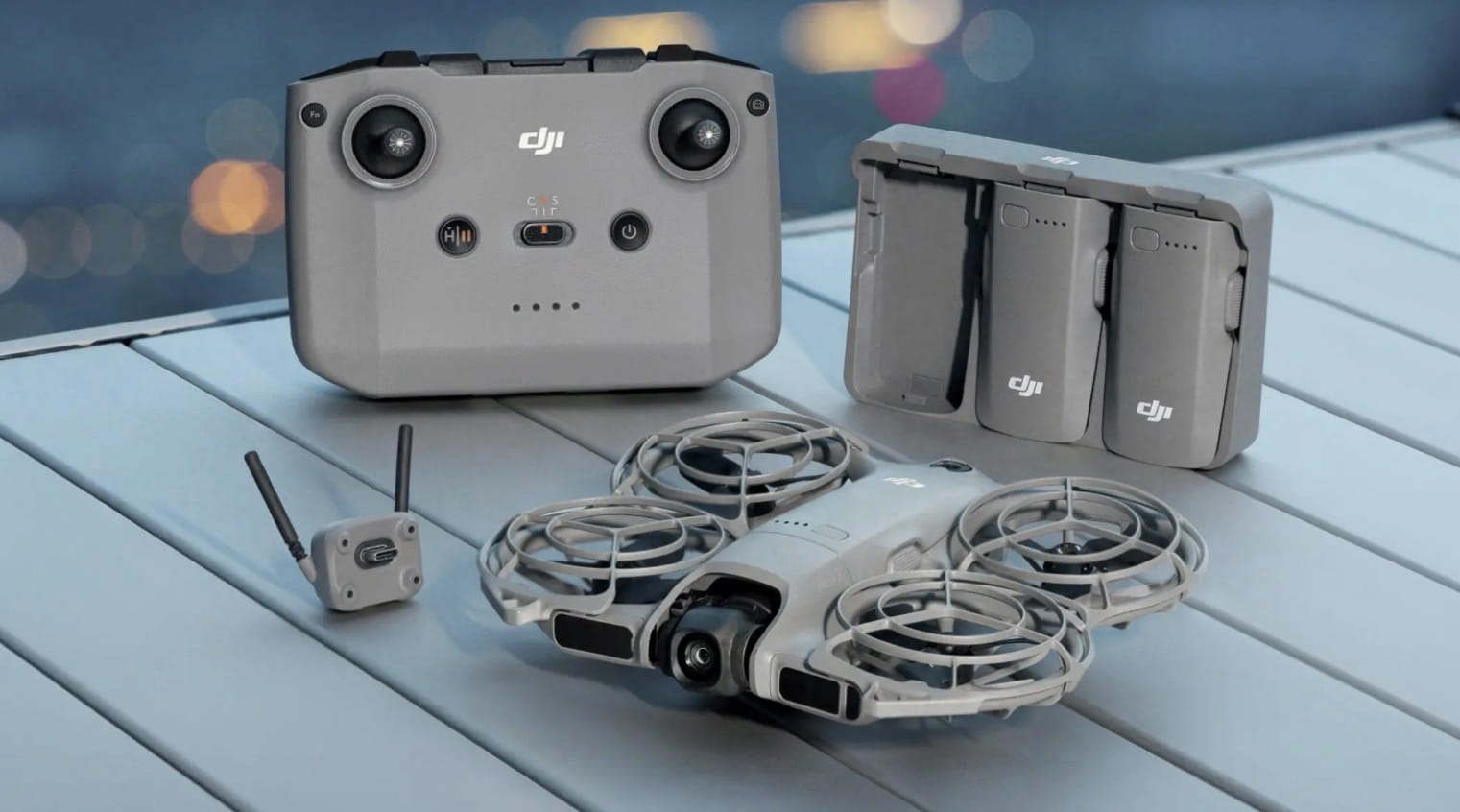DJI officially announced the Neo 2 drone will launch in Europe, Canada, and Brazil on November 13, 2025, marking a significant global expansion for the upgraded palm-launched platform—but the United States is notably absent from the company’s marketing campaign despite the drone receiving FCC certification months ago. The announcement comes just 45 days before DJI faces an automatic December 23 deadline that could block all new drone sales in America.
DroneXL’s Jasper Ellens reposted DJI’s “Fly Your Way” teaser on X, confirming the November 13 launch date for the three regions.
“It’s official: NEO 2 is coming to #europe, #canada and #brasil next week,” Ellens wrote. “But no announcement on the #UnitedStates website. This is how trade wars work people, no 4D chess move, no deals. I hope my American friends can order via Ebay and that customs won’t intercept it. Cheers.”
The selective regional launch strategy highlights the increasingly fragmented reality facing Chinese drone manufacturers operating under U.S. regulatory pressure. DJI launched the Neo 2 in China and Taiwan on October 30, with availability expanding to the Philippines and other Asian markets shortly after. The November 13 date extends that rollout to Western markets—but American customers clicking DJI’s teaser links encounter 404 errors on the company’s U.S. website.
 Photo credit: Huaiba Crazy Tech
Photo credit: Huaiba Crazy TechMajor Camera And Safety Upgrades Over Original Neo
The DJI Neo 2 represents substantial improvements over the original palm-launched drone that made its debut in 2024. DJI upgraded the gimbal from single-axis to dual-axis mechanical stabilization, providing dramatically smoother footage during complex maneuvers. The drone now captures 4K video at 60fps—double the original’s 30fps maximum—with additional support for 4K/100fps slow-motion recording.
Perhaps most significantly for beginner pilots, the Neo 2 features comprehensive obstacle avoidance that was completely absent from the original model. The drone includes an omni-way monocular vision system combined with forward-view LiDAR and down-view infrared sensing. Forward-facing sensors detect obstacles from 0.5 to 15 meters (1.6 to 49.2 feet) at flight speeds up to 8 m/s (17.9 mph), while rear, side, up, and down sensors provide detection from 0.5 to 15 meters at speeds up to 3 m/s (6.7 mph).
DJI also added a small LED display on the drone’s body showing battery life, connection status, and active flight mode—addressing a common complaint about the original Neo’s lack of at-a-glance telemetry. Battery capacity increased to 1606 mAh, extending maximum flight time to approximately 19 minutes compared to the original’s 18-minute maximum. Despite the added features, the Neo 2 weighs just 151 grams (5.3 ounces)—well under the 250-gram (8.8-ounce) threshold that triggers registration requirements in most countries.
 Photo credit: Huaiba Crazy Tech
Photo credit: Huaiba Crazy TechPricing And Package Options
Leaked pricing information suggests the Neo 2 will start at approximately €239 ($259 USD) for the base package including the drone and one battery. The Fly More Combo with three batteries and the RC-N3 remote controller is expected around €399 ($429 USD), while the Motion Fly More Combo including motion controller and Goggles N3 adapter could reach €579 ($599 USD).
These prices represent a modest increase over the original Neo, which launched at $199 for the base package. The pricing reflects substantial hardware upgrades including the dual-axis gimbal, comprehensive sensor suite, and improved image processing capabilities.
December 23 Deadline Casts Shadow Over U.S. Market
The absence of U.S. marketing for the Neo 2 occurs against the backdrop of intensifying regulatory pressure that threatens to cut off DJI’s access to American customers entirely. Section 1709 of the 2025 National Defense Authorization Act mandates that a U.S. national security agency must complete a security review of DJI by December 23, 2025. If no agency finishes the review—and ten months later, none have confirmed they’re conducting one—DJI will automatically join the FCC’s Covered List.
That designation would block new DJI products from receiving FCC equipment authorizations, effectively ending new drone sales in the United States. The FCC voted October 28 to grant itself unprecedented authority to retroactively revoke equipment authorizations for companies on its Covered List, closing loopholes DJI attempted to exploit through shell companies.
The Neo 2 received FCC certification in July 2025, meaning the drone is legally cleared for sale in America. But FCC approval and actual market availability have become increasingly disconnected as DJI navigates customs seizures, political pressure, and regulatory uncertainty. The company conducted no American marketing campaign for the Neo 2—no English-language press releases, no U.S. teaser campaigns, no pre-launch communications with American retailers.
This strategic silence reflects what DroneXL previously reported as DJI’s “China first” approach—prioritizing markets with stable regulatory environments over the increasingly unpredictable U.S. landscape.
 Photo credit: DJI
Photo credit: DJIWhat American Pilots Face
For American drone operators interested in the Neo 2, the path forward remains uncertain. Some retailers may import units from international markets, following patterns established with other recent DJI products that received limited U.S. distribution. But official DJI warranty support, readily available accessories, and competitive pricing become significantly more challenging without an authorized U.S. launch.
The original DJI Neo proved popular with American pilots precisely because it offered an affordable, sub-250-gram platform that didn’t require FAA registration for recreational use. The Neo 2’s improvements—particularly the comprehensive obstacle avoidance and dual-axis gimbal—address the original model’s primary weaknesses while maintaining that weight advantage.
Ellens’ suggestion that Americans might need to resort to eBay purchases from international sellers carries real risks as the December 23 deadline approaches. Customs and Border Protection has already demonstrated willingness to seize DJI shipments, and the regulatory landscape could shift dramatically in the coming weeks.
DroneXL’s Take
The Neo 2 launch strategy perfectly illustrates how regulatory uncertainty doesn’t just affect companies—it directly harms consumers who lose access to products despite those products being legally certified for sale. DJI spent the time and money to secure FCC certification for the Neo 2 back in July, meaning federal regulators examined the drone’s radio components and deemed them compliant with U.S. spectrum regulations. That certification remains valid today.
But legal certification and market viability have diverged completely. When a company can’t trust that approved products won’t be seized at customs, or that inventory won’t become worthless overnight due to retroactive bans, the rational response is exactly what we’re seeing: skip the U.S. market entirely and sell where regulatory frameworks remain predictable.
We’ve been tracking DJI’s regulatory challenges since the NDAA passed, and the Neo 2 situation represents a troubling escalation. This isn’t a drone with export restrictions or failed certifications—it’s an FCC-approved consumer product that Americans simply can’t reliably access because trade policy has made the market too unstable to serve.
European, Canadian, and Brazilian pilots will enjoy a capable, affordable sub-250-gram drone with professional-level obstacle avoidance starting next week. American pilots get 404 errors and eBay gambles. That’s not security policy—it’s the practical outcome of using regulatory pressure as industrial policy without actually prohibiting the product.
The December 23 deadline looms 45 days away. No federal agency has confirmed it’s conducting the mandated security review. And DJI is making calculated decisions about which markets justify the investment of marketing campaigns and retail partnerships. The Neo 2’s selective launch tells you everything about how those calculations are playing out.
What do you think? Should American drone pilots try international purchases, or wait to see if U.S. availability materializes? Share your thoughts in the comments below.
Discover more from DroneXL.co
Subscribe to get the latest posts sent to your email.
.png)




